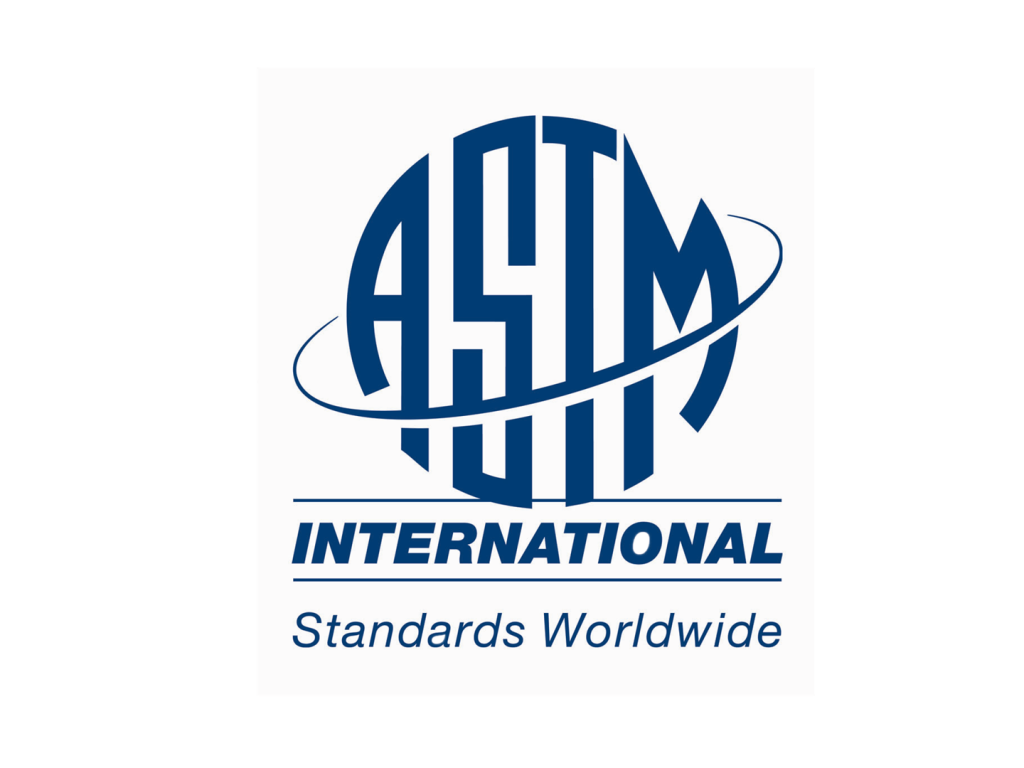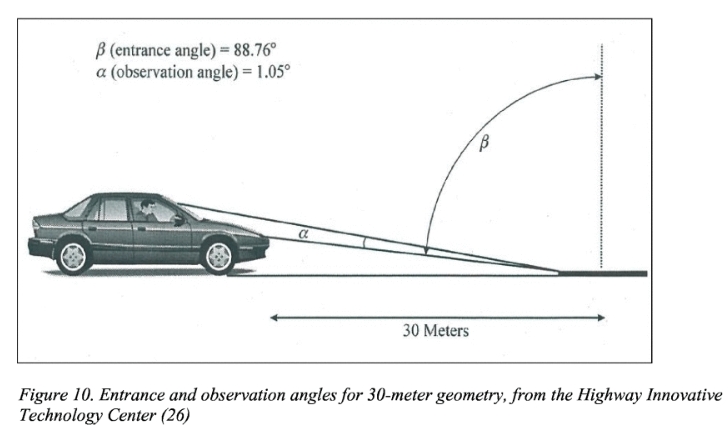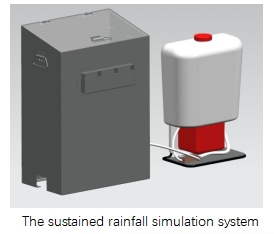
ASTM E2832-12(2017)
Standard Test Method for Measuring the Coefficient of Retroreflected Luminance of Pavement Markings in a Standard Condition of Continuous Wetting (RL-2) Significance and Use
Scope
1.1 This test method covers a measurement of the wet retroreflective (RL-2) properties of horizontal pavement marking materials, such as traffic stripes and road surface symbols. A standardized method utilizing a standardized continuous wetting device and a portable retroreflectometer is described to obtain measurements of the wet retroreflective properties of horizontal pavement markings.
1.2 Retroreflective performance obtained with this test in a standardized condition of continuous wetting does not necessarily relate to how markings perform in all conditions of natural rain.
NOTE 1: Test Method E2177 may be used to describe the retroreflective properties of pavement markings in conditions of wetness, such as after a period of rain.
1.3 This test method is suitable for measurements made in the laboratory and in the field when the necessary controls and precautions are followed.
1.4 This test method specifies the use of external beam retroreflectometers conforming to Test Method E1710.2 The entrance and observation angles required of the retroreflectometer in this test method are commonly referred to as “30 meter geometry.”2

1.5 The test method excludes the effects of rain between the vehicle and the marking.
1.6 Results obtained using this test method should not be the sole basis for specifying and assessing the wet retroreflective effectiveness of pavement marking systems. Users should complement the results of this test method with other evaluation results, such as nighttime visual inspections.
1.7 The values stated in SI units are to be regarded as standard. The values given in parentheses are for information only.
1.8 This standard does not purport to address all of the safety concerns, if any, associated with its use. It is the responsibility of the user of this standard to establish appropriate safety, health, and environmental practices and determine the applicability of regulatory limitations prior to use.
1.9 This international standard was developed in accordance with internationally recognized principles on standardization established in the Decision on Principles for the Development of International Standards, Guides and Recommendations issued by the World Trade Organization Technical Barriers to Trade (TBT) Committee.
4. Summary of Test Method
4.1This test method describes a standard procedure for measuring the retroreflective properties of horizontally applied pavement marking systems under conditions of continuous wetting.
4.2The pavement marking system under test is subjected to continuous wetting delivered by a wetting device of a specified design calibrated to provide a controlled wetting rate.
4.3A protocol and instrument requirements are described for measuring RL_2 under a defined condition of continuous wetting.

5. Significance and Use
5.1 This test method produces a measure of retroreflective efficiency (coefficient of retroreflected luminance, RL-2) for a pavement marking system under conditions of continuous wetting. The test result depends on factors such as the pavement marking binder and optic materials, their application, wear from traffic and plowing, wetting rate, and road grade and cross slope.
5.2 The measured retroreflective efficiency under conditions of continuous wetting may be used to characterize the properties of a pavement marking on the road as water is continuously falling on it. The retroreflective efficiency of the marking under conditions of continuous wetting is almost always different than under dry conditions.
5.3 The wetting rate of 2 in./h represents the upper limit of what is meteorologically classified as heavy rainfall. Rainfall rates above 2 in./h are classified as extreme or violent, and are sometimes associated with weather such as tropical storms.
5.4 The retroreflectivity of pavement markings degrades with traffic wear and requires periodic measurement to ensure that the coefficient of retroreflected luminance under continuous wetting meets requirements and provides adequate visibility for nighttime drivers.
5.5 The continuous wetting rate as well as the roadway grade and cross slope impact the results of this test method. The user shall measure and report the rate used for testing.
5.6 The roadway grade and cross slope adjacent to the measurement area impact the results of this test method. A digital level (inclinometer) can be used to quickly measure grade and cross slope.
5.7 Results obtained using this test method should not be the sole basis for specifying and assessing the wet retroreflective effectiveness of pavement marking systems. Users should complement the results of this test method with other evaluation results, such as nighttime visual inspections.

